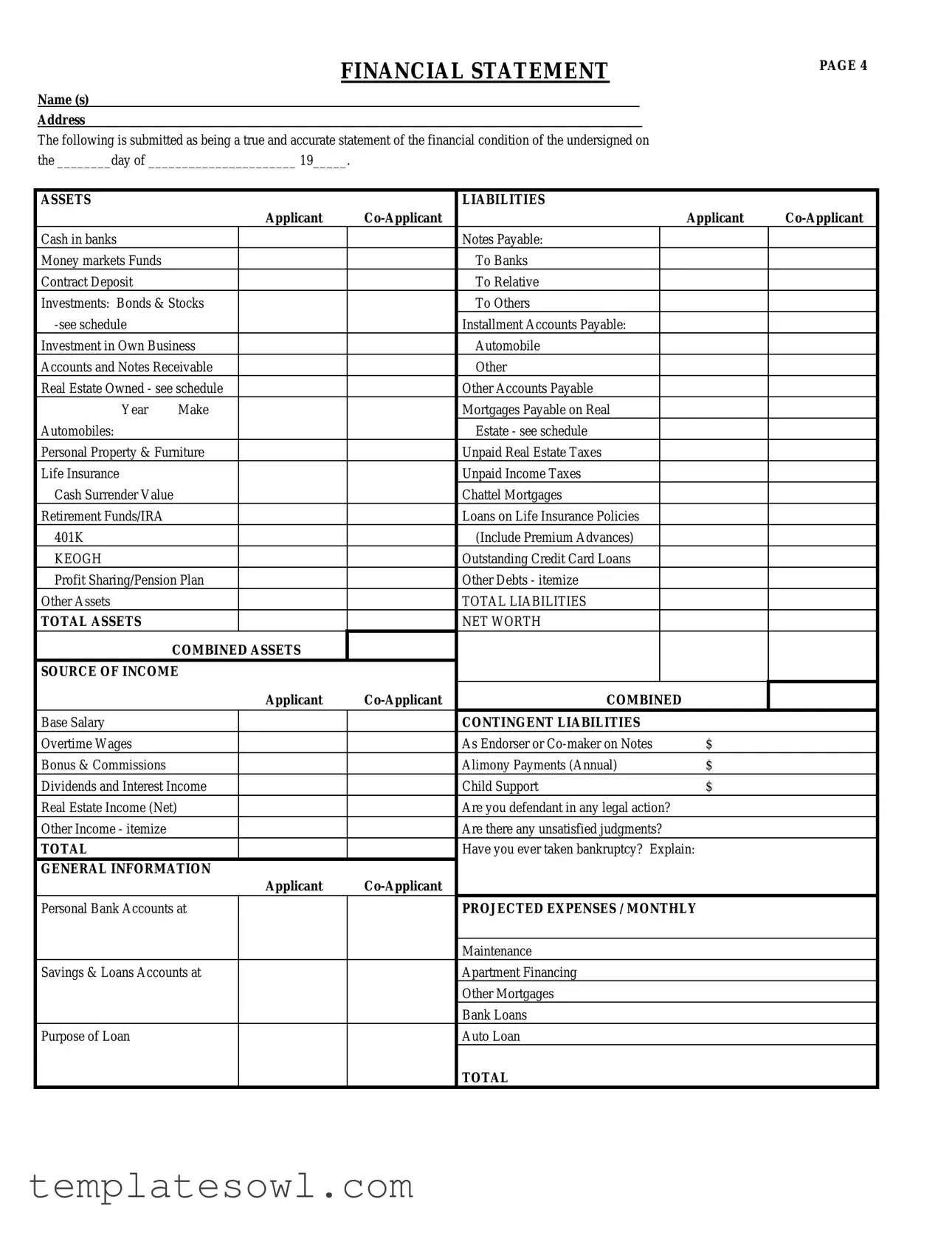Filling out the Rebny Financial Statement form can feel daunting, but avoiding common mistakes is essential for presenting a clear and accurate financial picture. One frequent mistake occurs when individuals forget to fill in their personal information. This may seem trivial, but it’s vital to provide complete names and addresses. Omitting this may lead to processing delays or even rejections, as the form lacks essential identification details.
Another common error is in the section listing assets versus liabilities. People often overlook documenting all their liabilities, leading to a skewed net worth calculation. Each item, from credit card debts to mortgage balances, should be diligently noted. This information helps demonstrate the applicant's true financial obligations and provides a realistic overview of their financial health.
Additionally, rounding amounts can be tempting, but estimates can create problems. Rounding off figures, whether for income, expenses, or asset value, can seem easier, but presenting precise numbers is crucial. Accurate reporting of financial figures gives a clearer insight into one’s situation and mitigates the risk of being perceived as misleading.
In the income section, many individuals fail to itemize their income sources. Listing only a total income may overlook additional streams of income such as rental properties, dividends, or part-time jobs. Providing detailed information about each source can better support the financial request and illustrate a more comprehensive income profile.
Another frequent oversight is neglecting to check for contingent liabilities. These might include co-signing a loan or being responsible for alimony or child support payments. Not accounting for these obligations can misrepresent one’s financial standing, leading to incorrect conclusions about available resources.
It's also important that signers date their signatures correctly. Whether it’s the application date or the signature date, discrepancies can lead to questions about the validity of the application. A careful review can ensure that all dates align and are accurately completed.
Some applicants get so focused on reporting assets that they underestimate the value of their personal property. Furniture, electronics, and other possessions can add up, and every item should be documented to give a full depiction of one’s wealth. Leaving out valuables diminishes the overall asset total and could impact financial decisions.
Pitfalls can also arise in the expenses section, where people may forget to include all monthly expenditures. Routine payments such as utilities, groceries, and insurance should be noted. A thorough representation of monthly outflows helps paint a clearer financial picture and reveals potential gaps in budgeting.
Lastly, applicants should remember to answer all questions thoroughly. Many might skip queries that seem irrelevant or unimportant. Every question is designed to gather specific information that can augment or clarify circumstances. Responding fully helps avoid unnecessary complications later on in the process.


